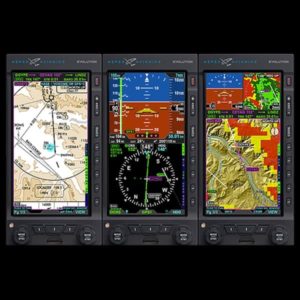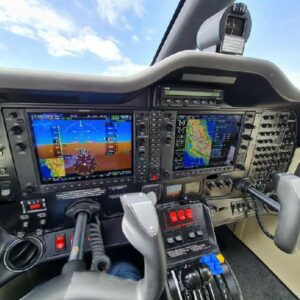No products in the cart.
Avionics
Showing 1–16 of 51 results
Filters Sort results
Reset Apply
The Evolution 2500C3 combines the 1000C3 Pro PFD, the 1000 MFD & the 500 MFD to provide a total system with the flexibility & convenience of dual MFDs. The Evolution 2500C3 delivers safety & confidence of full PFD instrument redundancy. The Evolution 2500C3 Flight Display provides a top-of-the-line Class III glass panel that's easy-to-use. Last Updated: 06-06-2022 |
Avionics For Sale on AvPay
AvPay has a range of Avionics For Salein the US, Europe, Australia, South Africa and throughout the world. Contact Avionics Sellers directly on AvPay to compare prices through the Aviation Directories here: https://avpay.aero/directory/
AvPay is a global aviation marketplace that lets you browse a wide selection of Avionics For Sale. View all of our Avionics Listings and discover other related Aviation Products & Services here: https://avpay.aero/marketplace/
Can’t find the Avionics you’re looking for? Check-out the Aviation Directories to find an Aviation Company that offers the service you’re looking for: https://avpay.aero/directory/
AvPay: Connecting Pilots and Operators with Avionics Sellers Worldwide!
The difference between a glass cockpit and an analogue cockpit lies in the instrumentation and display systems used to present flight information to the pilot. An analogue cockpit, also known as a “steam gauge” cockpit, utilizes mechanical and analogue instruments to provide flight information. These instruments include analogue gauges, dials, and needles that display parameters such as airspeed, altitude, attitude (pitch and roll), heading, and engine parameters. Analog cockpits typically consist of separate/individual instruments dedicated to specific functions. Each instrument displays a single parameter, and the pilot must visually scan and interpret multiple instruments simultaneously to gather a complete picture of the aircraft’s status. Analog cockpits rely more on manual input and physical manipulation of controls by the pilot. Automation features, if present, are minimal compared to glass cockpits. A glass cockpit, also known as a digital cockpit or integrated display system, replaces the traditional analogue instruments with electronic displays. These displays are typically large, flat-panel screens that present various flight information in a more intuitive and integrated manner. In a glass cockpit, flight data is consolidated and presented on one or more displays, providing a comprehensive view of critical parameters such as airspeed, altitude, attitude, heading, navigation information, and engine data. This integration reduces the need for pilots to scan multiple instruments. Glass cockpits often incorporate advanced automation features, including autopilot systems, flight management systems (FMS), and digital navigation aids. These systems can automate certain tasks and provide enhanced situational awareness to the pilot. Glass cockpits offer more flexibility in terms of display layouts and customization options. Pilots can often personalize the way information is presented based on their preferences or the specific flight phase. Glass cockpits can integrate other aircraft systems, such as weather radar, terrain awareness and warning systems (TAWS), traffic collision avoidance systems (TCAS), and more. This integration allows for better decision-making and improved safety. The shift from analogue cockpits to glass cockpits represents a significant advancement in aviation technology, offering pilots more intuitive displays, enhanced automation, and integrated information to enhance situational awareness and flight management.






